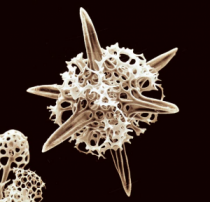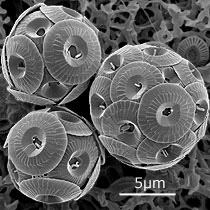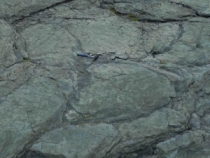Plate tectonics
Plates represent the Earth's lithosphere and measure from a few tens of kilometres thick in the ocean, to between a 100 to 200 kilometres on the continents. Today there are around fifteen plates on our planet. Plate movement at the Earth's surface creates oceans along the diverging plate limits, mid-ocean ridges, and volcanic arcs and mountain belts along converging plate limits. This process called subduction, the main force behind plate tectonics, fracturing continents by pulling on their margins. These fractures, called rifts, give birth to new oceans. Mid-ocean ridge magmatic and volcanic activity produces a new oceanic crust. A good example is the present Red Sea, a northern extension of the East-African Rift, which is spreading at a speed of a few centimetres a year.
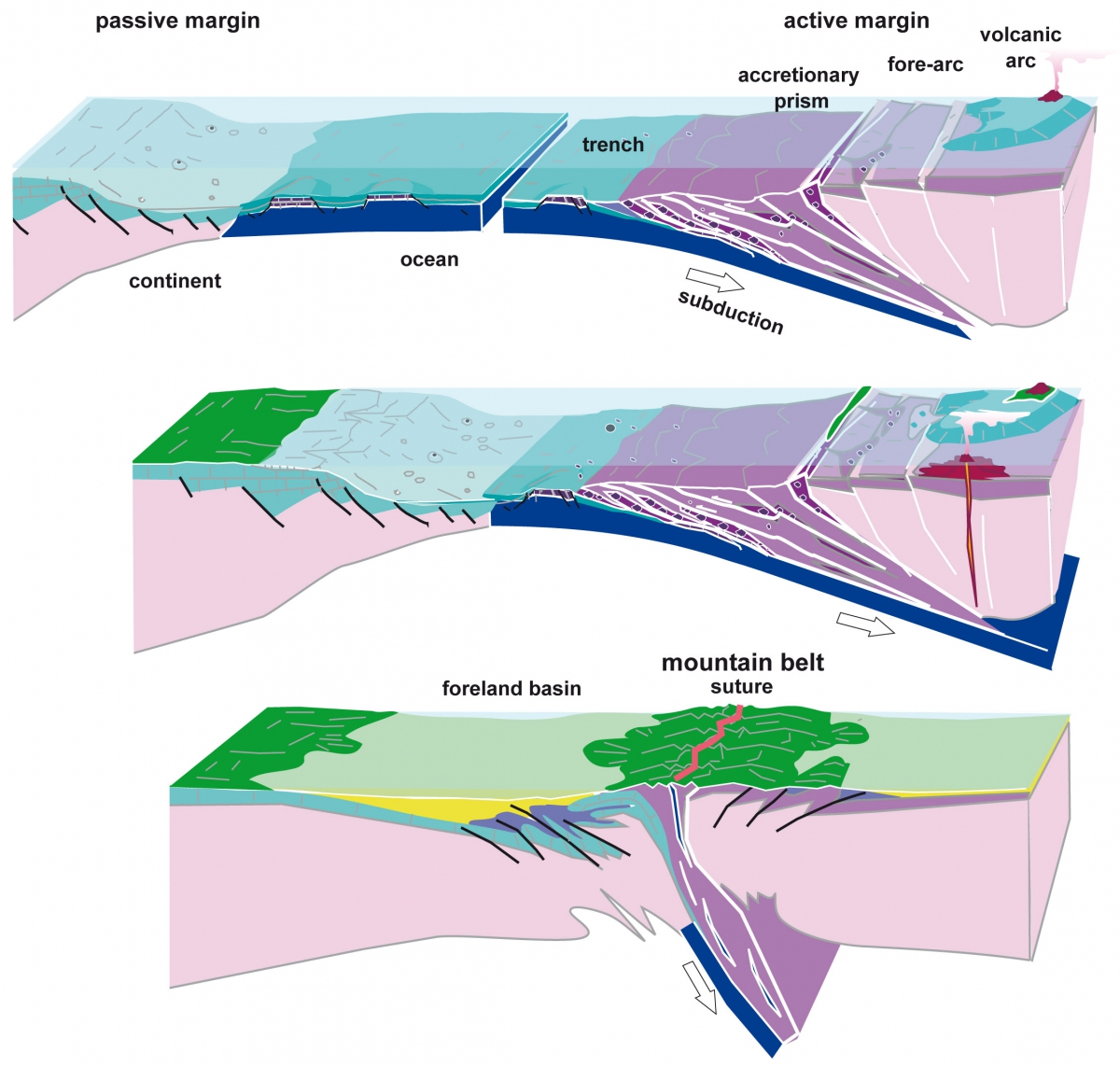 How were rocks such as peridotite, deeply buried in the Earth’s mantle, brought up to the Earth's surface?
Answering this question necessitates an understanding of plate tectonics, which in turn explains mountain belt formation, or orogenesis.
How were rocks such as peridotite, deeply buried in the Earth’s mantle, brought up to the Earth's surface?
Answering this question necessitates an understanding of plate tectonics, which in turn explains mountain belt formation, or orogenesis.
Plates represent the Earth's lithosphere and measure from a few tens of kilometres thick in the ocean, to between a 100 to 200 kilometres on the continents. Today there are around fifteen plates on our planet. Plate movement at the Earth's surface creates oceans along the diverging plate limits, mid-ocean ridges, and volcanic arcs and mountain belts along converging plate limits.
The Alps are the result of two colliding plates, the European plate passing underneath the African plate. This process, called subduction, has raised and deformed the African plate.
Subduction corresponds to the disappearance of oceans between continents. The Mariana trench is an example of the deep troughs where oceans disappear.
The thinner crust of continental margins allowed for the partial disappearance of the European plate under the opposing African plate during the collision. However the rocks that constituted these margins, not dense enough to be deeply subducted, are transformed and deformed before reappearing much later at the Earth's surface.
The subduction of oceanic crust produces a piling up of sediments scraped from the sea bottom by the buttress of the upper plate, called an accretionary prism. Subduction also generates volcanism on the upper plate, creating a volcanic arc or a cordillera. In the Alps, the quantity of subducted oceanic rock was insufficient to generate magma, and no volcanic arc was formed. Volcanism however does appear later. (Chapter 9)
Further reading :
Initially an ocean was opened in order for it to be closed consequently. Tectonic plates are pulled on their borders by the subducting ocean lithosphere, the motor behind plate tectonics. This force created at plate margins can cause plates to fracture and affect the whole lithosphere at a depth of more than 100 kilometres. The East-African Rift is an example of a continental fracture or rift.
The Rhine Graben, close to Switzerland, is a fracture where two massifs, the Vosges and the Black-Forest, form the rift shoulders.
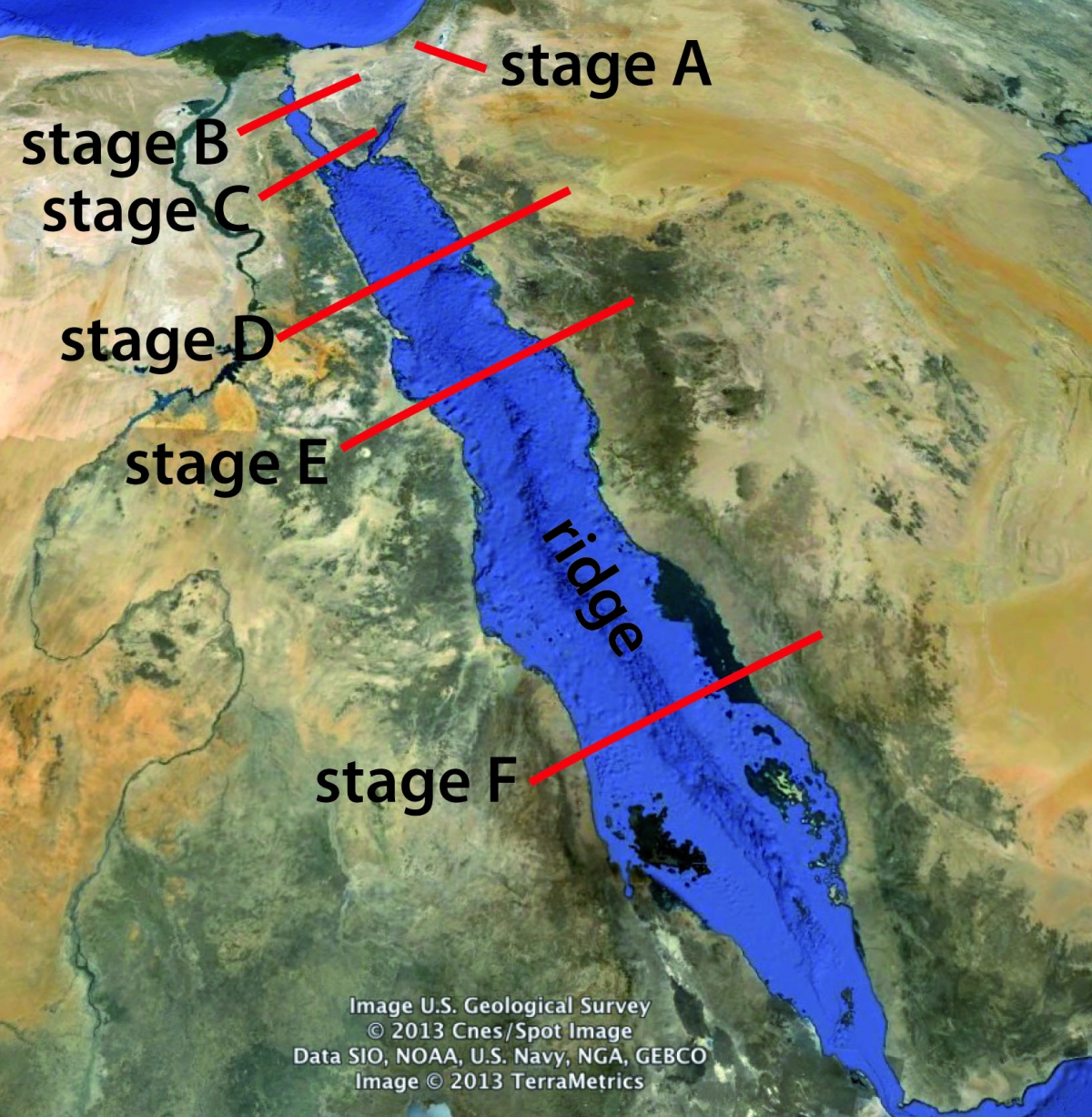
The Red Sea and the Suez Gulf region is also an area where active crustal extension, or rifting, can be observed up to the formation of an ocean.
Stage A: the Dead Sea or East African Rift region
Stage B and C: the Gulf of Suez region,Stage D and E: the northern Red Sea
Stage F: the southern Red Sea with a new mid-ocean ridge, producing a new sea-floor between the separating African and Arabian plates.
During rifting, peridotite from the Earth's mantle progressively emerges to the Earth's surface (red stars in the figure). Volcanic rocks from the new oceanic crust, gabbros and basalts, brown in the figure, are welded to these uplifted peridotites. Through metamorphism, they become serpentinites, present in the Alps of Valais. They mark the suture of the disappeared ocean following its subduction and the collision of its margins.
Further reading :
As well as serpentinites the suture contains rocks derived from the oceanic crust and its sediments:
• prasinite : metabasalts and meta-volcanic tuf
• metagabbros : found in the Aiguilles Rouges, Arolla
• sediments that were deposited on the sea floor, now represented by grey/ black calcschists.
The assemblage of serpentinite, gabbro, basalt and sediments is called ophiolite, or ophiolitic mélange and found in almost all Alpine type mountain belts, in Greece, Turkey, Iran and the Himalayas. The French word mélange, for mix, well describes the disordered rocks of the oceanic suture zone. The former superposition was destroyed in the accretionary prism, where the sediments of the Alpine ocean were piled up in front of the African bulldozer.
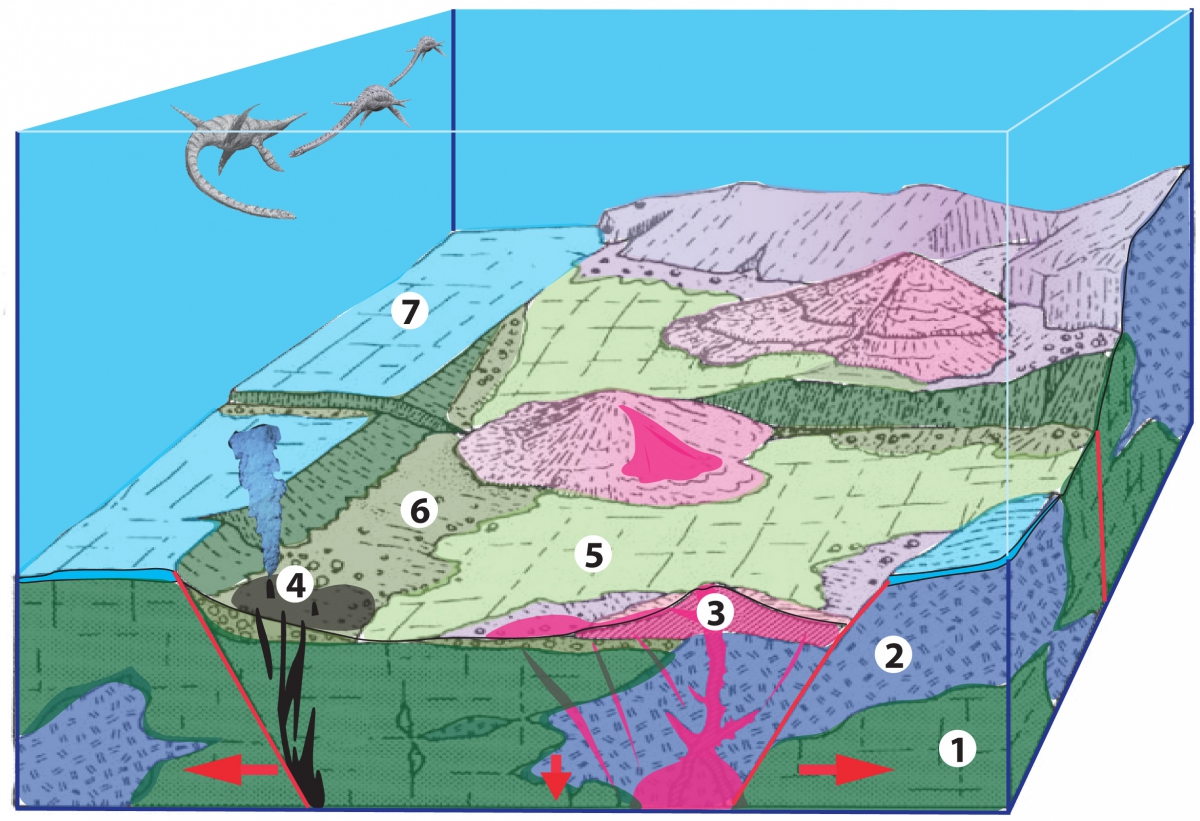 This 500 km wide Alpine Ocean is now represented by a strip of a few kilometres, cutting the valley from the Col du Tsaté to the Aiguilles Rouges, bypassing La Forclaz and Satarma.
This 500 km wide Alpine Ocean is now represented by a strip of a few kilometres, cutting the valley from the Col du Tsaté to the Aiguilles Rouges, bypassing La Forclaz and Satarma.
The mid-ocean ridge of the Alpine Ocean was slow spreading with little volcanism, and the sea floor was dominated by
1. Peridotites raised to the surface by rifting processes.
2. Gabbros represent former magmatic chambers from which lava streamed to the surface in basaltic flows,
3. often as pillow-lava.
4. «Black-smokers» represent hydrothermal activity associated with mineralisation (manganese)
5. Volcanic tufs were deposited in the central trough producing layered prasinites and other debris.
6. The fracture and extension of the lithosphere created numerous fault escarpments from which breccias made of peridotite, gabbro and basaltic blocks were deposited.
7. Relatively pure limestone made of microscopic algae, and sometimes manganese also exist in the Val d'Hérens. The Pointe des Ignes south of the Aiguilles Rouges is associated with basalts, gabbros and serpentinites. This outcrop clearly represents a fragment of the former mid ocean ridge (sea field trip).
Elsewhere in the Alps the basaltic rocks of the ridge are often found with red or green siliceous rocks, called radiolarites. These microscopic zoo-plankton skeletons (radiolaria) and the micro-fossils of algae enable a precise age determination of oceanic rocks: the Alpine ocean opened 180 million years ago!
|
Radiolaria |
Microscopic algae |
|
|
|
|
| |
|
Méta-basalte in pillow |
Méta-gabbro |
|
|
|
|
(Mt des Ritse, photo Marthaler) |
|







